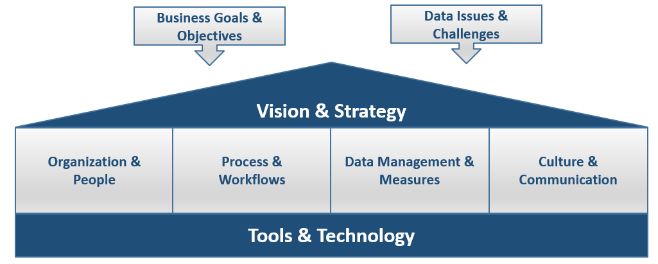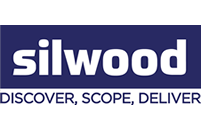The Business Value of Metadata for Data Governance
Guest blog post by Donna Burbank, Managing Director of Global Data Strategy, Ltd.
Data Governance has seen a rise in popularity in recent years, as more and more organizations see the value of data in driving business success.
Data drives today’s modern business and increasingly, profitable companies are gaining a better understanding of its importance.
Not only can data improve efficiency and profitability of data-driven processes such as targeted marketing campaigns, customer support, product development, and more, but entirely new business models are arising from organizations leveraging their data assets to strategic advantage. Think of Amazon, whose revolutionary recommendation engine to increase sales was based on the ability to capitalize on its massive wealth of data around customer purchasing patterns. Uber is another classic example of an entirely new business model based on optimization of location-based data to optimize supply & demand and completely disrupt the transportation industry.
As a result of its increased value, governance measures are often put into place to manage data more effectively. Typically, data governance focuses on the people, processes, and policies that drive a data-driven culture, as outlined in Figure 1. While this “softer side” of data governance is critical and should not be discounted, equally important is the technical aspect of data governance, which is too often overlooked in data governance programs.

Figure 1: Components of a Successful Data Governance Program
A successful data governance program should always begin with a focus on business goals and objectives, followed by analysis on which data areas support these objectives. For example, if a key goal of the company is to drive sales for a new product launch, priority should be placed on the data that drives the marketing campaigns and sales initiatives that support that initiative. Typically, this would include data around customers and their purchasing patterns, marketing campaigns and their effectiveness, sales staff and their productivity, etc.
This type of data is typically stored in a number of systems across the organization and, very often within packaged applications such as Salesforce, Microsoft Dynamics, SAP, etc. Achieving a comprehensive view of systems such as these however is a daunting task, and beyond the scope of what can be handled through focusing only on organization, people, and policy. This is due to their size and the high degree of complexity required to execute their business processes.
Metadata, while it may sound like a complex term, can be defined simply as the “who”, “what”, “where”, “why” and “how” of information. Where is data stored? How is it formatted? What is the business definition? Metadata is the critical link that aligns the business and organizational aspects of data governance with the technologies that support them. Business stakeholders in a governance program may be charged with coming up with definitions for core business terms such as customer, campaign, fiscal quarter, etc. For example, do we define customers as those who have purchased a product, those who have been involved in a marketing campaign, those who have an active loyalty card, etc? There are many subtleties in even seemingly simple concepts such as “customer” and these must be defined and documented as formal metadata in data models, business glossaries, and/or metadata repositories.

Figure 2: Cartoon highlighting the Importance of Business Definitions, from Data Modeling for the Business by Hoberman, Burbank, Bradley, Technics Publications, 2009
Once defined, these business concepts must then be linked with the numerous and disparate technical solutions that store this data. For example, customer information may be sourced through an online transactional sales system, stored in a data warehouse for reporting, and housed in a CRM system for sales and marketing campaigns, just to name a few. A robust metadata management solution can automatically parse the technical structures of this diverse array of systems to create a lineage between the business goals & definitions and the technical systems that run the organization. For example, if we change our definition of customer to include only those who have responded to a marketing campaign, which systems should be included? Or more tactically, if we change the way in which customer names are formatted and stored, what is the downstream impact on the systems to make this change? Given the rapid pace of today’s business environments, these changes must be understood in real-time. The business can’t wait months for manual discovery and analysis.
Particularly with CRM and ERP systems, which contain some of the most valuable data assets in the organization around customers, sales, and more, getting a view of the data lineage can be challenging. Many of these systems present themselves as a ‘black box’ in that, due to their proprietary architectures, the technical and business definitions cannot be easily discovered through the analysis typically done for database systems via data models, metadata repository lineage, etc. To be fair, these systems were written with the goal of managing complex enterprise systems, not metadata sharing. But without the metadata from these critical systems, any governance effort will be hampered and limited in its success.
The good news is there are tools that can translate the business and technical metadata from these systems so that they can be integrated with the other data systems such as data warehouses, MDM hubs, transactional systems, metadata management systems, etc. to get a holistic view of the core data assets of the organization. With this full metadata lineage, data governance programs can be more effective since they are linked with the actual systems that are running the organization. This combination of business and organizational change combined with technical metadata and lineage is what drives a truly successful data governance program.
With this integrated and governed view of data assets, organizations are able to think strategically about their data. Data lineage can be a roadmap to new business models and innovation, as new relationships between key data areas are discovered and understood. Are there ways to link customer data with product usage for better marketing campaigns? Ways to target products by location for better penetration rates? The list is endless, and is only limited by the data in your organization and your understanding of it. Rather than seeing models and metadata as an academic or architectural artifacts, think of them as enablers to business innovation. With metadata lineage linked to the systems and applications that drive the business, insights can be made actionable to drive true business growth and profitability.
To learn more about how this can be achieved, join me on Wednesday, February 15th for a free webinar where I’ll go into more detail of how to make your data governance program actionable through metadata management for CRM and ERP systems. Register here.




Leave a Reply
Want to join the discussion?Feel free to contribute!